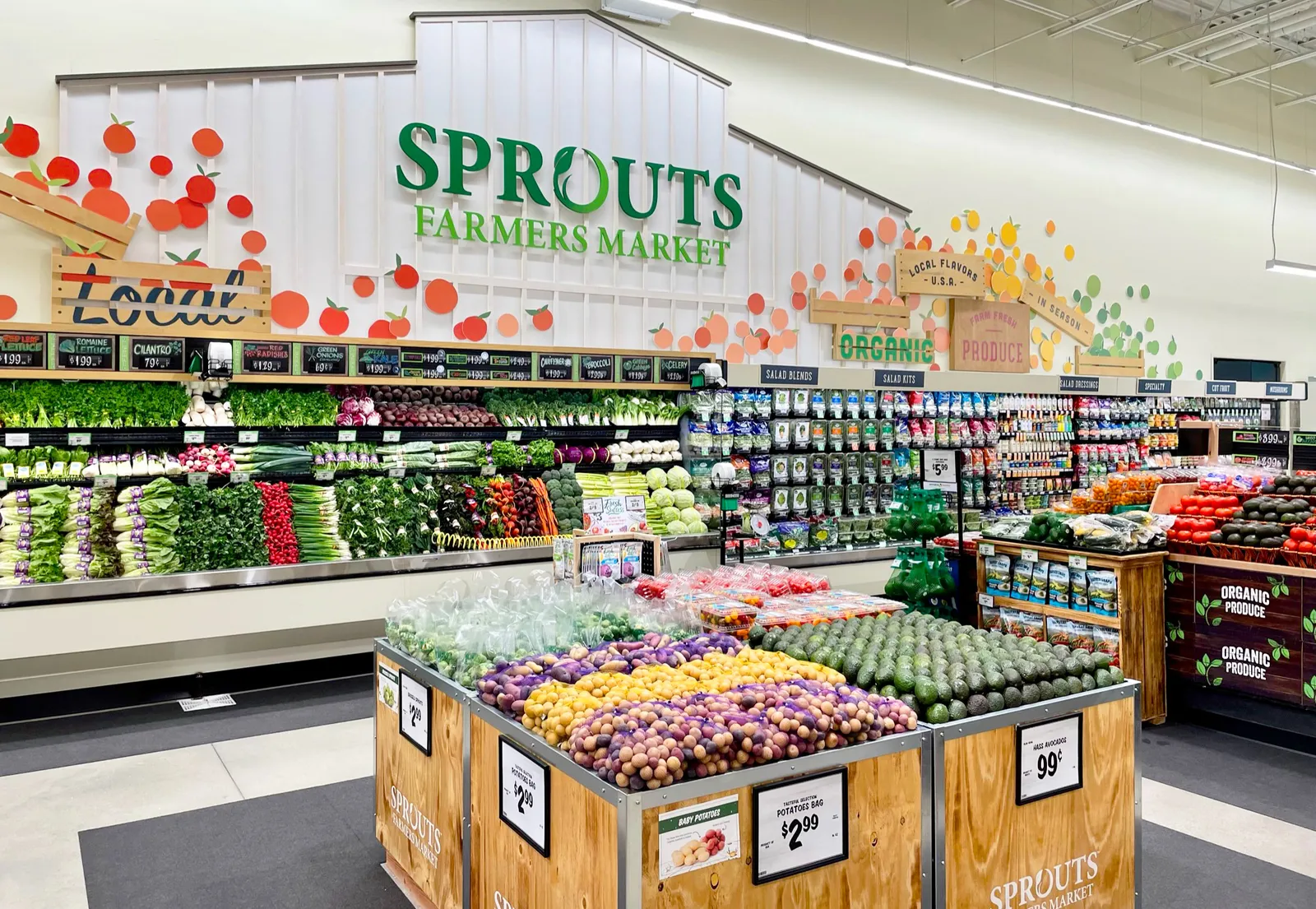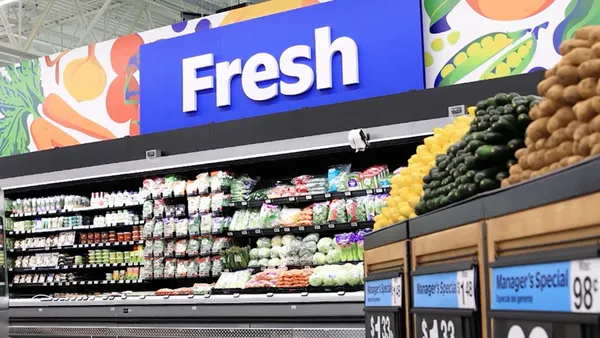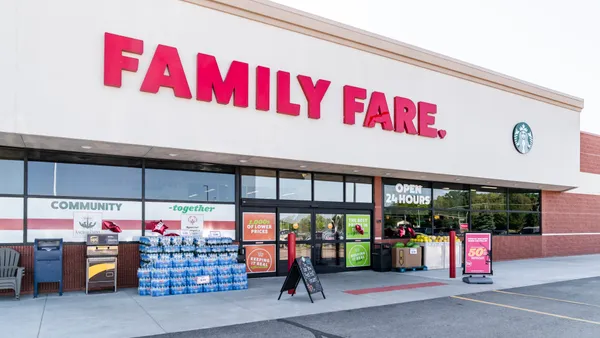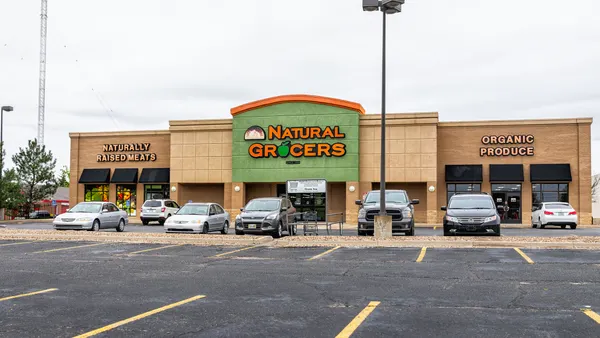Dive Brief:
- Sprouts Farmers Market intends this year to significantly sharpen its focus on the smaller store format the specialty grocery chain detailed at the start of the pandemic, executives said Thursday during an earnings call.
- Sprouts plans to open at least 30 new stores in 2023, all of which will be based on the less expansive design it has been developing over the past few years, CFO Chip Molloy told analysts during the earnings call.
- Sprouts has been refining its business model during recent quarters as it seeks to strengthen connections with the health-conscious shoppers it views as central to its efforts to build sales and boost profits.
Dive Insight:
The new store design is built around a 23,000-square-foot box — considerably less than the 30,000 square feet the grocer’s legacy locations occupy, Molloy noted. The company has indicated that stores based on the updated format can accommodate roughly the same number of products as the older locations and have a stronger focus on produce.
The grocer also plans to close 11 stores based on the older design in 2023 as it revisits plans to cull bigger retail structures from its portfolio that it began developing in 2019 but put on hold when the COVID-19 crisis began the following year, according to Molloy. While these stores are around 30% larger than the company’s new design, they generate “negative four-wall cash flow,” he said.
“We would probably have closed them before now because of the strategy that we had in place, but it would have been the wrong thing to do in the communities that those grocery stores are operating in given what’s happened in the last couple of years,” CEO Jack Sinclair said during the call, adding the company doesn’t intend to replace the stores “because they're probably in the wrong place.”
One of the stores slated to cease operations will close during the first quarter when its lease runs out, and the remaining 10 will shut down during Q2, Molloy said, without providing details about their locations. All workers affected by the closures will have the opportunity to transfer to other stores, he said, adding that Sprouts doesn’t currently have plans to close additional stores en masse.
“We're getting to become an old enough retailer and a big enough retailer that, of course, every couple of years or every year or so you might have one or two where the leases have expired and you don't really want to renew it, or the trade areas move,” said Molloy. “But we won’t see any store closings of this magnitude anytime that we know anytime in the near next several years.”

Molloy said Sprouts began taking steps to reduce the size of stores in its pipeline as soon as executives concluded that it didn’t need locations larger than 23,000 square feet. That included canceling leases for stores based on the older format when possible as well as reducing the size of stores it was committed to constructing whenever it could, he said.
In the meantime, recently opened stores based on the smaller design have provided evidence supporting the company’s sense that downsizing would yield positive results, according to Molloy.
Sprouts, which had 386 stores in 23 states as of Jan. 1, opened 16 new stores in 2022, of which nine were based on the smaller design, Molloy said.
Molloy also said during the earnings call that Sprouts continued to see its online business grow in Q4. E-commerce sales were up 16.5% during the period and accounted for 11.4% of the chain’s overall sales over that time.
The retailer recorded net sales of $1.6 billion during the fourth quarter of last year, a 6% year-over-year increase, while same-store sales rose 2.9%. For all of 2022, Sprouts saw net sales rise 6.4% compared with the prior year and notched same-store sales growth of 2.2%.
Molloy added that Sprouts’ deli department delivered robust results in Q4, adding that categories that set the chain apart, like dairy, frozen and bakery, also performed well. Customers have also been showing increased interest in buying bulk items, he said.
Sinclair said that while Sprouts has been exploring ways to increase engagement with shoppers, it does not currently have plans to introduce a loyalty program even though the grocer has not been as successful as competitors in encouraging shoppers to share contact information.
“Our interpretation of what’s happening with loyalty cards … in the grocery space is that it’s a zero-sum game,” Sinclair said. ”We don’t want to be the next card in the wallet or the purse when people go through the register.”














